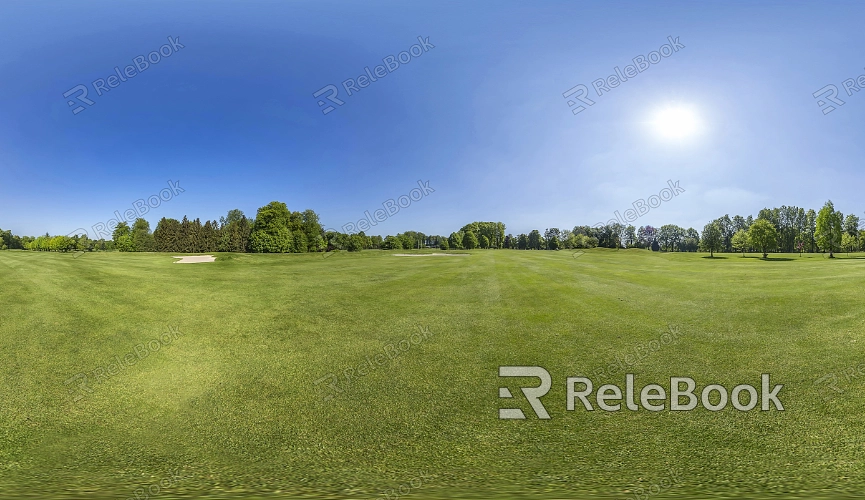How to Create Realistic Lighting with HDR Textures in Unity
Whether it's for game development or architectural visualization, the use of HDR textures has become increasingly common. Designers are continually seeking more realistic lighting effects to enhance user immersion and visual experience. HDR textures capture and display a wider range of light within a scene, resulting in more detailed and lifelike lighting. This article will explore how to effectively use HDR textures in Unity, offering practical tips to help you achieve more realistic lighting in your projects.

1. Importing and Configuring HDR Textures
The first step in utilizing HDR textures is to ensure they are correctly imported and configured. High-quality HDR textures can significantly enhance the lighting in your scene, making the selection of the right resources crucial.
Choosing the Right HDR Textures: When selecting HDR textures, consider the needs of your project and the style of the scene. HDR files typically come in formats like HDR or EXR, so ensure the chosen format is compatible with Unity. Relebook offers a rich library of high-quality HDR textures, easily accessible at textures.relebook.com.
Importing HDR Textures: When bringing HDR files into your Unity project, make sure to select the appropriate options in the import settings. Set the texture type to "Default" and enable the "sRGB" option to maintain color accuracy.
Configuring Texture Settings: After importing the HDR texture, open its Inspector panel and adjust the settings for optimal results. Choose "HDR" as the texture type and select a suitable compression format based on your project needs, balancing performance and visual quality.
2. Applying HDR Textures to Materials
Once your HDR textures are imported, the next step is to apply them to materials to enhance the lighting in your scene.
Creating a New Material: In Unity, create a new material and set its rendering mode to "Standard" or another appropriate mode. Apply the HDR texture to the "Albedo" or "Emission" slot to boost lighting effects. Adjust the Emission intensity to make the material appear more vibrant in the scene.
Using Advanced Shaders: For more complex scenes, consider using Shader Graph or custom shaders for greater control over the HDR texture's visual impact. These tools allow you to fine-tune the material's appearance under various lighting conditions, making it more realistic.
3. Using HDR Textures for Environmental Lighting
HDR textures aren't just for materials; they can also be used as environmental lighting sources, affecting the entire scene's ambiance.
Setting Up Environmental Lighting: In Unity’s Lighting panel, find the “Environment Lighting” settings and apply the HDR texture to the “Skybox Material.” This way, the HDR texture will act as a global light source, enhancing the overall lighting in your scene.
Adjusting Light Intensity: Use the "Intensity Multiplier" slider to tweak the environmental light's strength, ensuring it highlights details without causing overexposure. Additionally, consider using reflection probes to capture the HDR texture’s reflections from various angles, increasing the scene’s realism.

4. Optimizing HDR Texture Performance
While HDR textures can greatly enhance realism, their high resolution and wide lighting range may impact performance, especially in complex or large projects.
Reducing Resolution: To decrease memory usage and improve rendering speed, consider lowering the resolution of HDR textures in Unity. Lower resolutions often do not noticeably affect visual quality.
Enabling Mipmaps: Mipmaps automatically reduce the texture resolution when displayed at a distance or in small sizes, conserving system resources and preventing flickering or banding. Enable Mipmaps in the HDR texture’s import settings to optimize performance.
Dynamic Loading and Unloading: In complex scenes, you can implement dynamic loading and unloading of HDR textures via scripting. This allows you to unload high-resolution textures when they are not needed, conserving memory, and reload them when required.
5. Enhancing Reflections with HDR Textures
In Unity, HDR textures can be used to boost the realism and depth of reflections in your scene.
Setting Up Reflection Probes: Place reflection probes in areas where reflections are needed and configure them to capture the lighting information from the HDR texture. This makes object surfaces in the scene reflect the environment more naturally.
Optimizing Reflection Resolution: Adjust the resolution of reflection probes based on your project’s requirements, balancing the quality of reflections with performance needs. On high-performance devices, you can opt for higher resolution reflections to achieve more detailed reflective surfaces.
6. Ensuring Consistency in Lighting and Color
To create a cohesive scene, designers should ensure that the lighting from HDR textures aligns with other light sources and color settings in the environment.
Adjusting Color Balance: When using HDR textures, tweak the color balance to match other elements in the scene. This ensures that the lighting appears more natural, enhancing visual consistency.
Coordinating with Other Light Sources: If your scene has multiple light sources, make sure they harmonize with the ambient light provided by the HDR texture. Adjust the brightness and color temperature of these light sources to create a more cohesive visual experience.
By properly using HDR textures in Unity, designers can significantly enhance the lighting effects and overall visual quality of their scenes. Whether it's importing and configuring textures, applying them to materials, optimizing performance, or enhancing reflections, each step contributes to creating a more immersive visual experience.
If you're looking for high-quality HDR image resources, Relebook offers a wide range of options to help you achieve outstanding visual effects in your projects. Visit Relebook to explore more textures and model resources that can elevate your work.

